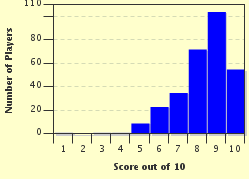Quiz Answer Key and Fun Facts
1. This little fellow's thick fur is brilliantly white but I've learnt that it usually changes to blue-gray in the spring. He is able to move quite rapidly. Looks like a rabbit to me. Which animal have I crossed paths with?
2. Along the trail I spotted another animal. It's bushy white tipped tail caught my eyes. My guide told me that although the one I saw was red these animals can be silver, brown or black. Which animal is this?
3. The next animal I saw had a short, round head with small eyes and short rounded ears. Its fur was thick and dark and seemed oily. I was face to face with a bear cub for the first time.
4. Now, now! I'm positive that this fellow is a wolf although it looks very much like a dog. In the winter its fur is dense and fluffy to protect it from the cold. The wolf shown in this photo is of the subspecies canis lupus. What is this native of the remote areas of Eurasia and North America commonly called?
5. Can you believe it? Verne47 saw a female screech owl in Alaska. Here is the photo of the bird she saw. Did she see a screech owl?
6. This animal looks like a giant cow. It has long, shaggy hair that Verne47's guide says are guard hairs. According to the guide there is an undercoat that falls out when winter ends and the temperature rises. Which animal has Verne47 seen?
7. Verne47 was positive that she saw a cute little goat with funny horns when an animal like the one in this photo streaked by. Which animal did she really see?
8. Verne47 is quite surprised to glimpse what seems to be a chicken looking quite comfortable in the snow. She blinks and takes another look. No, that's not a chicken. Now which bird could that be so happy in the snow?
9. This huge, lumbering bear scared Verne47 silly. Luckily she was a great distance away from it. From the photo, identify the species of bear that had Verne47 longing for home.
10. It was not the cold that caused Verne47 to shiver. It was this startlingly bulky creature with prominent tusks and whiskers that caused her conclude that she had enough adventure and it was time to head back to safe haven in Jamaica. Which animal did she just encounter reclining in the snow?
Source: Author
Verne47
This quiz was reviewed by FunTrivia editor
guitargoddess before going online.
Any errors found in FunTrivia content are routinely corrected through our feedback system.

